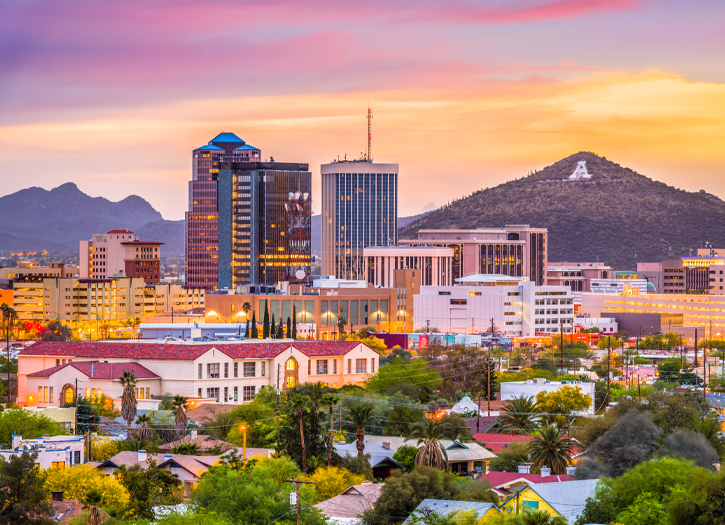In the two-month period after Governor Ducey abruptly ended Arizona’s statewide lockdown on May 15, the seven-day moving average of new COVID-19 cases in Arizona soared, from an average of 377 cases per day to 3,249 cases on July 15.On June 17 Governor Ducey, under pressure due to rising COVID cases, publicly encouraged Arizona citizens to wear masks and allowed individual cities and counties to issue mask mandates. As of September 18, 2020, Arizona has the seventh-highest number of confirmed cases in the United States.
Arizona Governor Doug Ducey declared a public health emergency on March 12. Dr. Cara Christ, director of ADHS, said there were no plans to limit large public gatherings as governors in other states have done. As of March 12, there were nine confirmed cases of coronavirus in Arizona, including five from the same household in Pinal County (reportedly the household of the healthcare worker announced as being positive for COVID-19 on March 6).As of March 19, a total of 14 cases were identified within the Navajo Nation most of which had reported symptoms to the Kayenta Indian Health Service Unit in Kayenta, Arizona.
In April 2020, Arizona received $1.86 billion of federal relief funds from the CARES Act. From this amount, much of the funds were reallocated to cities and organizations/businesses: Phoenix ($293 million), Mesa ($90 million),Tucson ($96 million), the Mayo Clinic ($29.6 million), Scottsdale Healthcare Hospitals ($27.8 million), Mesa Air ($92.5 million).In that same month, the state unemployment rate reached a high of 12.6%, which included a loss of 276,300 jobs.
In May 2020, the state’s Joint Legislative Budget Committee predicted a $1.1 billion budget shortfall through the 2021 fiscal year. The losses were largely anticipated from the expected drop of corporate income tax (by 39%), income tax withholdings (by 15%), and the increase in state costs due to healthcare. From mid-March to May, over half a million individuals had filed unemployment claims in Arizona.Some Arizonans reported an issue with receiving the additional unemployment funds from the CARES Act.On 1 June 2020, the Arizona Department of Economic Security (AZDES) announced that it received over $24 million from the coronavirus relief bill. The department stated that the funds would be used to assist low-income individuals with utility bills, housing payments, and employment assistance.
Following the outbreak of COVID-19 in the United States, academic institutions across Arizona moved to distance learning. On March 30, Governor Ducey declared a statewide closure for all schools and mandated the option for students to complete coursework in an alternate method.Following the lifting of the Arizona’s lockdown order, Gov. Ducey announced that schools would be reopening for face-to-face instruction in the fall. The director of Arizona Department of Health services.
On 1 June 2020, the Arizona Department of Education released guidelines for the reopening of public schools. Measures included masks for staff and older students, staying home in the event of COVID-19 symptoms or diagnosis, provisions for frequent disinfection of surfaces, and socially distanced seating. Ducey announced on June 29, 2020 that in-person school would be delayed until August 17.On July 24, Ducey announced that schools would not reopen in person until public health benchmarks were reached, and that these benchmarks would be determined by ADHS by August 7.
Most school districts in Arizona are beginning the school year online with some exceptions for vulnerable students.Despite not meeting the recommended benchmarks, the governing board for J.O. Combs Unified school district in San Tan Valley voted to resume classes in person on August 17, 2020; however, these plans were cancelled after many teachers staged a “sick out”.
A second school district, the Queen Creek Unified school district, also voted to resume classes in person on Monday with some teachers resigning in response.By March 16, all three state universities (University of Arizona, Arizona State University, and Northern Arizona University) announced that they would continue online courses through the end of spring semester.By late April, all three state universities publicly announced the intention to resume in-person classes in the fall semester. All universities described plans for measure to ensure public safety.







Add Comment
You must be logged in to post a comment.